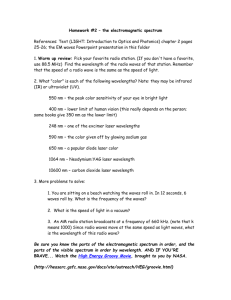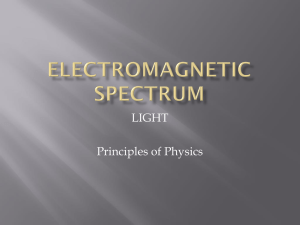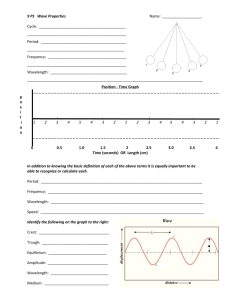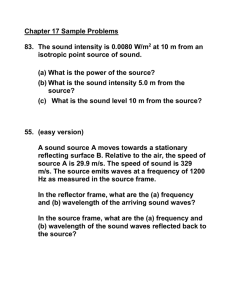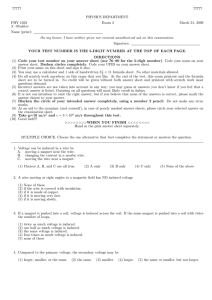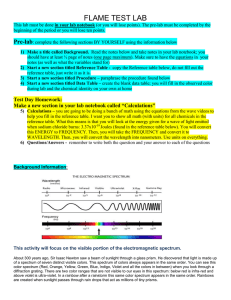Light - Mrs. Mcgee
advertisement
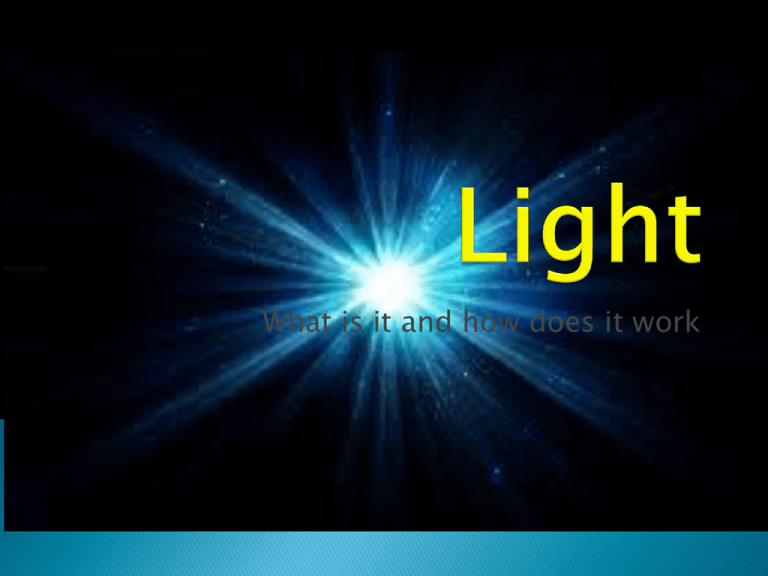
What is it and how does it work a type of electromagnetic radiation of a specific wavelength Some of these wavelengths we can see (visible light) Some wavelengths we cannot see (x-rays, infrared, ultraviolet) Light has characteristics of both waves and particles As a wave: light has an amplitude, frequency and wavelength. Light waves can also interfere with one another. Light can reflect, refract and diffract just like other waves do Light has characteristics of both waves and particles As a particle: light bounces off surfaces in random directions like particles would do The particles of light are called photons Light scatters its energy as it moves away from its energy source Light scatters in all directions and fills up space. That’s why a whole room can be lit up with on light Why is the sky blue? Blue light has the shortest wavelength and scatters more than other light The brightness of light depends on the light’s intensity Intensity decreases and distance increases Light has a speed of 3 X 108 m/s (186,000 m/s) Light will slow down as it passes through air, water, and glass material Vacuum Air Water Ethyl Alcohol Fused Quartz Whale Oil n 1 1.0003 1.33 1.36 1.4585 1.460 material Crown Glass Salt Asphalt Heavy Flint Glass Diamond Lead n 1.52 1.54 1.635 1.65 2.42 2.6 More energy = higher frequency Less energy = lower frequency EM spectrum consists of all energies, wavelengths, and frequencies of light. Waves on the EM spectrum that we can see is called visible light Red, orange, yellow, green, blue, indigo, violet (ROYGBIV) But there are lots of waves on the spectrum we cannot see like radio waves, infrared waves, x-rays, etc. When light hits a surface, it will bounce off at the same angle it hit the surface at. Smooth surfaces – light rays bounce in the same direction Rough surfaces – light rays bounce off in many directions Remember from the wave unit that when light bounces off an object, it is known as reflection When light is absorbed by an object, the energy from the light is transformed into heat energy That’s why you feel warm when you’re outside in the sun. Your body is absorbing the light energy and changing it into heat! The color you see depends in the wavelength of light that reaches your eyes shorter wavelength = purple/blue = higher frequency longer wavelength = red/orange = lower frequency The light from the sun contains all the wavelengths of the colors we see When the white light strikes an object all the colors are absorbed by that object except for the color we see. That color is reflected into our eyes Most colors are a mixture of more than one wavelength (color) Primary colors – red, yellow, blue, mix together to produce all the colors we can see When all the colors of light combine we see white Black is the absence of light Remember when light enters a new medium like air, water, or glass, the wave will bend. This is called refraction This is because the light slows down as is passes through different mediums Refraction makes objects appear like they are in different positions When light hits a lens (like in your eye) the wave will change direction Convex Lenses- like in your eye- turn images upside down Concave Lenses https://www.youtube.com/watch?v=xkDhQG XqwCM



